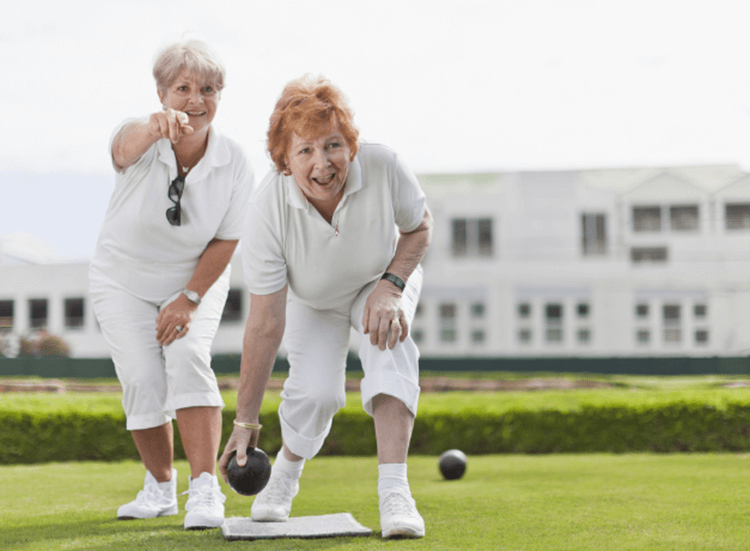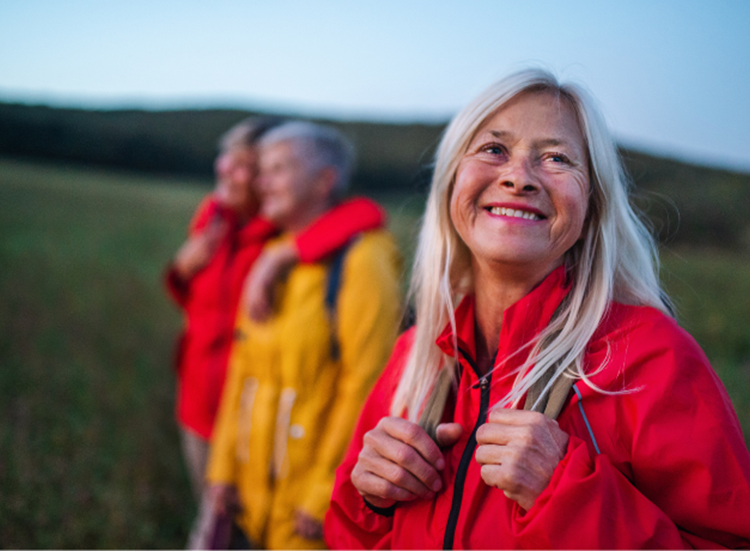Share your results
Please enter your email
Results shared!
We've sent a link to your email so you can access your results at any time.
In Australia, osteoporosis affects over 1.2 million people. Around 50% of women and 33% of men over 60 years old have osteoporosis.

Osteoporosis is a common condition which causes bones to become fragile over time. The leading causes of this condition are the genes you inherit and getting older, as well as:
Osteoporosis can cause fractures or broken bones, which could affect your ability to move and stay independent. But by making healthy choices you can prevent and manage osteoporosis.
Osteoporosis is a common condition which causes bones to become fragile over time. The leading causes of this condition are the genes you inherit and getting older, as well as:
Osteoporosis can cause fractures or broken bones, which could affect your ability to move and stay independent. But by making healthy choices you can prevent and manage osteoporosis.
Read less...
Doing minimal physical activity results in your bones becoming weaker. Moving your body every day is important for improving and maintaining bone health.
Most bone fractures occur because of a fall. You can reduce your risk of falling by exercising. Moderate-intensity movement builds your muscle strength and improves your balance.
Doing minimal physical activity results in your bones becoming weaker. Moving your body every day is important for improving and maintaining bone health.
Most bone fractures occur because of a fall. You can reduce your risk of falling by exercising. Moderate-intensity movement builds your muscle strength and improves your balance.
Read less....tmb-large%20card.png?sfvrsn=3782495_2)
Exercise provides great benefits when managing or even reversing osteoporosis. When it comes to bone health, not all exercise is equal. Bones need to experience the right amount of impact and strain. They have an amazing ability to adapt! In response to different weights and applied stress, they become stronger or denser. Benefits include:
Exercise provides great benefits when managing or even reversing osteoporosis. When it comes to bone health, not all exercise is equal. Bones need to experience the right amount of impact and strain. They have an amazing ability to adapt! In response to different weights and applied stress, they become stronger or denser. Benefits include:

A great starting point is to make sure you’re moving your body the recommended amount of time each day for your age. For people over 65 years old, that's 30 minutes per day. Follow these guidelines for the prevention and management of osteoporosis:
If you have osteoporosis, please talk to your doctor before you start a new exercise program.
A great starting point is to make sure you’re moving your body the recommended amount of time each day for your age. For people over 65 years old, that's 30 minutes per day. Follow these guidelines for the prevention and management of osteoporosis:
If you have osteoporosis, please talk to your doctor before you start a new exercise program.
Read less....tmb-large%20card.png?sfvrsn=75858266_2)
Things to think about when exercising with osteoporosis:
Most people need an exercise program that includes moderate weight-bearing movement. But sometimes a gentler approach may be best.
Exercise is one important part of the big picture that is your health. To prevent and manage osteoporosis, addressing all the possible causes is the best strategy.
Things to think about when exercising with osteoporosis:
Most people need an exercise program that includes moderate weight-bearing movement. But sometimes a gentler approach may be best.
Exercise is one important part of the big picture that is your health. To prevent and manage osteoporosis, addressing all the possible causes is the best strategy.
Read less....tmb-large%20card.png?sfvrsn=e66329ad_2)
If you would like to find local exercise classes, social activities, and helpful tips, try the quick quiz by clicking on the 'Let's Go' button below.
For more detailed information about osteoporosis click on these links:
Want to know more? Find out about exercise for falls prevention in the next article in this series here:
If you would like to find local exercise classes, social activities, and helpful tips, try the quick quiz by clicking on the 'Let's Go' button below.
For more detailed information about osteoporosis click on these links:
Want to know more? Find out about exercise for falls prevention in the next article in this series here:
Read less...LiveUp provides free information to help you make informed decisions about your health. This information is for general and educational purposes only, is not intended to provide a comprehensive guide, and does not replace medical advice. Everyone is different, so some of these tips may work better for you than others. You should use your own judgment and seek medical advice when applying this information to yourself, to determine if it is suitable in your circumstances. Your use of, or reliance on, this information is solely at your own risk. Independent Living Assessment Incorporated is not responsible or liable for any injury, loss, or damage caused as a result of your use of, or reliance on, this information.
Exercise Right. (2023). How does exercise help osteoporosis? Powered by Exercise & Sports Science Australia. https://exerciseright.com.au/osteoporosis
'In Australia, osteoporosis affects over 1.2 million people. Around 50% of women and 33% of men over 60 years old have osteoporosis.' Healthy Bones Australia. (2023). The challenge. https://healthybonesaustralia.org.au/about-us/bone-health-australia
Take our easy OpenUp quiz to get personalised advice and see suggested products, services and support in your local area or online.
Let's go!